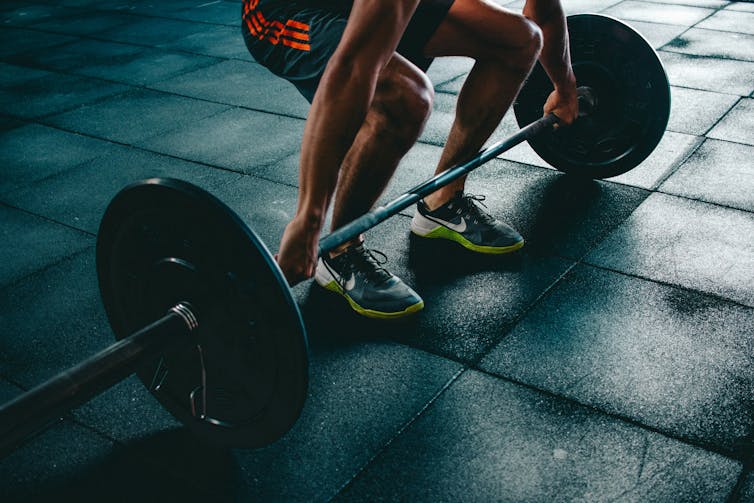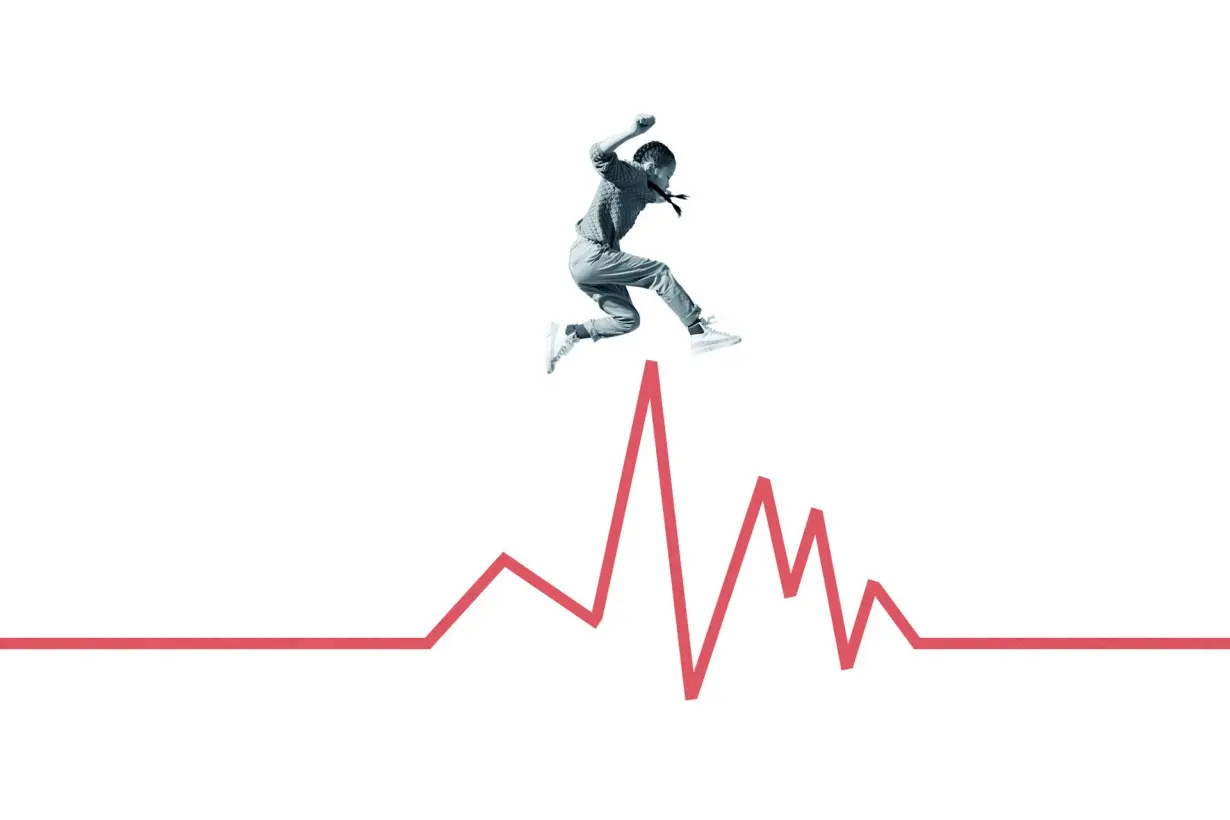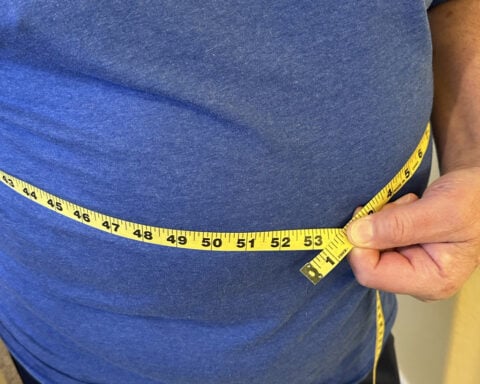Aerobic exercise like jogging, biking, swimming or hiking is a fundamental way to maintain cardiovascular and overall health. The intensity of aerobic exercise is important to determine how much time you should spend training in order to reap its benefits.
As an exercise science researcher, I support the American College of Sports Medicine’s recommendation of a minimum of 150 minutes per week of moderate aerobic exercise, or 75 minutes per week of high-intensity exercise. But what does exercise intensity mean?
There is a linear relationship between heart rate and exercise intensity, meaning as the exercise intensity increases, so does heart rate. Heart rate zone training, which uses heart rate as a measure of exercise intensity, has increased in popularity in recent years, partially due to the ubiquity of wearable heart rate technology.
The way exercise intensity is usually described is problematic because one person’s “vigorous” may be another’s “moderate.” Heart rate zone training tries to provide an objective measure of intensity by breaking it down into various zones. But heart rate can also be influenced by temperature, medications and stress levels, which may affect readings during exercise.
Heart rate and exercise intensity
The gold standard for determining aerobic exercise intensity is to measure the amount of oxygen consumed and carbon dioxide exhaled. However, this method is cumbersome because it requires people to wear a breathing mask to capture respiratory gases.
An easier way is to predict the person’s maximum heart rate. This can be done with an equation that subtracts the person’s age from 220. Although there is controversy surrounding the best way to calculate maximum heart rate, researchers suggest this method is still valid.
The American College of Sports Medicine outlines five heart rate zones based on a person’s predicted heart rate maximum. Zone 1, or very light intensity, equals less than 57% of maximum heart rate; zone 2, or light intensity, is 57% to 63%; zone 3, or moderate intensity, is 64% to 76%; zone 4, or vigorous intensity, is 77% to 95%; and zone 5, or near-maximal intensity, is 96% to 100%.
However, other organizations have their own measures of exercise intensity, with varying ranges and descriptions. For example, Orange Theory describes their zone 2 training as 61% to 70% of maximum heart rate. Complicating matters even further, companies that produce heart rate monitors also have higher thresholds for each zone. For example, Polar’s zone 2 is up to 70% of maximum heart rate, while the American College of Sports Medicine recommends a zone 2 of up to 63%.
Adapting heart rate zones
Zone training is based on the idea that how the body responds to exercise is at least in part determined by exercise intensity. These adaptations include increased oxygen consumption, important cellular adaptations and improved exercise performance.
Zone 2 has received a lot of attention from the fitness community because of its possible benefits. Performance coaches describe zone 2 as “light cardio,” where the intensity is low and the body relies mainly on fat to meet energy demands. Fats provide more energy compared to carbohydrates, but deliver it to cells more slowly.
Because fat is more abundant than carbohydrates in the body, the body responds to the cellular stress that exercise causes in muscle cells by increasing the number of mitochondria, or the energy-producing component of cells. By increasing the number of mitochondria, the body may become better at burning fat.

On the other end of the spectrum of exercise intensity is high-intensity interval training, or HIIT. These workouts involve exercising at a high intensity for short durations, like an all-out sprint or cycle for 30 seconds to a minute, followed by a period of low intensity activity. This is repeated six to 10 times.
During this sort of high-intensity activity, the body primarily uses carbohydrates as a fuel source. During high-intensity exercise, the body preferentially uses carbohydrates because the energy demand is high and carbohydrates provide energy twice as fast as fats.
Some people who turn to exercise to lose fat may eschew high-intensity training for zone 2, as it’s considered the “the fat burning zone.” This may be a misnomer.
Researchers have found that high-intensity interval training produces a similar increase in markers for mitochondria production when compared to longer, moderate aerobic training. Studies have also shown that high-intensity exercisers build muscle and improve insulin resistance and cardiovascular health similar to moderate-intensity exercisers, and they made these gains faster. The main trade-off was discomfort during bouts of high-intensity exercise.
Moderate- or high-intensity exercise?
With varying guidelines around heart rate zones and conflicting evidence on the potential benefits of training in each zone, exercisers may be left wondering what to do.
In order to yield the health benefits of exercise, the most important variable to consider is adhering to an exercise routine, regardless of intensity. Because the body adapts in similar ways to moderate- and high-intensity exercise, people can choose which intensity they like best or dislike the least.

Notice that the American College of Sports Medicine’s recommendation for exercise falls under moderate intensity. This is equivalent to zone 3, or 64% to 76% of maximum heart rate, a range you can only meet in the upper levels of most zone 2 workouts. If you’re not seeing desired results with your zone 2 workouts, try increasing your intensity to reach the moderate level.
A commonly reported reason for not exercising is a lack of time. For people short on time, high-intensity training is a good alternative to steady-state cardiovascular exercise. For people who find exercising at such a high intensity uncomfortable, they can get the same benefit by doing moderate-intensity exercise for a longer period.

Jason Sawyer does not work for, consult, own shares in or receive funding from any company or organization that would benefit from this article, and has disclosed no relevant affiliations beyond their academic appointment.
Source: The Conversation

 Insurance for natural disasters is failing homeowners − I don’t have the answers, but I do know the right questions to ask
Insurance for natural disasters is failing homeowners − I don’t have the answers, but I do know the right questions to ask
 Joe Biden’s record on science and tech: Investments and regulation for vaccines, broadband, microchips and AI
Joe Biden’s record on science and tech: Investments and regulation for vaccines, broadband, microchips and AI
 Meta shift from fact-checking to crowdsourcing spotlights competing approaches in fight against misinformation and hate speech
Meta shift from fact-checking to crowdsourcing spotlights competing approaches in fight against misinformation and hate speech
 In eyeing Greenland, Trump is echoing long-held American designs on the Arctic expanse
In eyeing Greenland, Trump is echoing long-held American designs on the Arctic expanse
 South Africa tried to pressure informal gold miners by cutting off food. Now it's pulling out bodies
South Africa tried to pressure informal gold miners by cutting off food. Now it's pulling out bodies
 Poland's leader accuses Russia of planning acts of sabotage against 'airlines around the world'
Poland's leader accuses Russia of planning acts of sabotage against 'airlines around the world'
 Jayden Daniels accomplishes a feat last done by Slinging Sammy Baugh in 1937
Jayden Daniels accomplishes a feat last done by Slinging Sammy Baugh in 1937
 Wildfires latest: A final round of dangerous fire weather and dry conditions is in the forecast
Wildfires latest: A final round of dangerous fire weather and dry conditions is in the forecast
 Kamala Harris memes questioning her cultural background highlight Americans’ contradictions with race
Kamala Harris memes questioning her cultural background highlight Americans’ contradictions with race
 Regardless of the intensity of exercise you prefer, keeping a consistent routine can keep your heart healthy.
Regardless of the intensity of exercise you prefer, keeping a consistent routine can keep your heart healthy.







